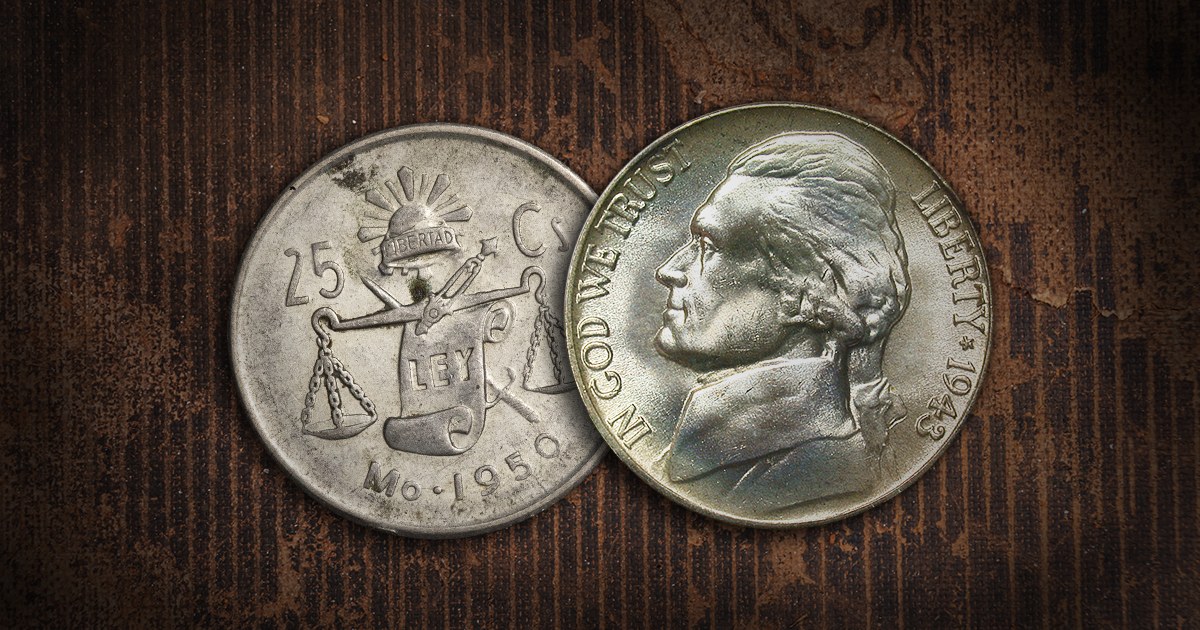
Billon is a metallic alloy that combines precious metals like silver or gold with a base metal such as copper. The base metal is the primary metallic content, and billon is mainly used for coins, medals, and tokens. Billon differs from bullion in that bullion coins typically contain 99.9% or 99.99% fine precious metals like silver and gold, while billon may be as little as 2% silver or gold.
What does the Word Billon Mean?
Billon comes from the French word bille, which means log. The use of billon for coinage goes back to the fifth and sixth centuries BC when billon coins with high silver content (40%) were produced on the island of Lesbos. In later days and through the Middle Ages, lower concentrations of silver were used to produce billon. Some had less than 2% silver content.
Billon in the Roman Empire
Billon may be best known for its use in the Roman Empire. By the third century, the debasement of the denarius and tetradrachm resulted in lower and lower concentrations of silver. Eventually, the coins were made entirely of bronze with a slim coating of silver. Some of the debased Roman Empire coins only had a wash of silver.
Billon in the United States
The Two-Cent Piece
There have been several billon issues in the United States. One of the first was not a regular issue but a pattern coin. The two-cent billon coin was a 90% copper and 10% silver pattern designed by Christian Gobrecht that was proposed under the Act of January 13, 1837. It was produced with a plain edge in medallic orientation and a reeded edge in coin orientation. This was the second proposal for a two-cent piece.
The first proposal was put forth in 1806 by Uriah Tracy, a Senator from Connecticut. Tracy’s proposal called for a similar billon coin with 6.4 grains of silver and 24.3 grains of copper. Tracy’s proposal failed amidst opposition from Mint Director Robert Patterson, who claimed it would be prohibitively difficult to refine silver from the coins.
Like the first effort, the second proposal for a two-cent coin failed when Mint Melter and Refiner Franklin Peale showed how easily Gobrecht’s two-cent pattern could be counterfeited. During a nationwide coin shortage in the Civil War, a third proposal for the two-cent piece was put forth. Tokens like the Feuchtwanger Cent and Hard Times tokens had begun to fill the gap and were struck from copper-nickel and bronze. The use of base metals was not lost on U.S. Mint Director James Pollock. On October 1, 1863, he wrote that Americans “merely want the inferior money for convenience in making exact payments” and began advocating for the copper-nickel cent to be replaced with a bronze piece. By December of that year, Pollock proposed a bronze cent and two-cent coin to Salmon P. Chase, the acting Secretary of the Treasury.
What About Constitutional Silver?
The historic 90% silver coins issued by the U.S. Mint would not be considered billon due to their high silver content. Some may consider 40% silver coins like the Bicentennial Eisenhower dollar billon, with a billon fineness threshold of less than 50%.
Others would counter that billon has a 35% precious metal threshold. This would make the 35% silver Jefferson nickel a billon coin on the upper edges of what could be considered billon. For this reason, some numismatists might avoid the term billon altogether since the very threshold of what defines it can be subjective.
Billon Coins in Mexico
Following numerous economic constraints, the Mexican Mint issued several billon coins in the 1950s to maintain a functioning currency system. Between 1950 and 1953, the 25 centavos coin was issued as a billon coin with 30% silver, 50% copper, 10% zinc, and 10% nickel.
Billon Coins in France
There were five types of French billon coinage issued from 1711 through 1760. They were first issued following an edict of Louis XIV in October of 1692 and were struck through the reign of Louis XV. Although the mintages are not known, the 15 deniers billon coin can be exceptionally valuable in AU grades today, selling for up to $1850. While it is still valuable in the higher grades, the Sou Marque can be found in near-basal states for less than $100.




